Introduction
Can A Parakeet Survive In The Wild: Parakeets, also known as budgerigars, are captivating and popular pet birds cherished for their vibrant plumage, cheerful demeanor, and engaging personalities. These charming avian companions have been bred in captivity for generations, offering joy to countless households worldwide. However, a thought often arises: Can a parakeet survive in the wild, where it is entirely disconnected from the comforts of a human-controlled environment?
This question takes us on a journey into the natural instincts and adaptability of these small parrots. While parakeets have thrived as domesticated pets, the challenges they face in the wild can be formidable. In this exploration, we will delve into the factors that influence a parakeet’s survival outside the confines of its cage or aviary.
We will examine the native habitats of wild parakeet populations, their behaviors, diet, and interactions with the environment. We will also consider the impact of human intervention, including the release of pet parakeets into unfamiliar territories. Through this investigation, we aim to gain a comprehensive understanding of whether a parakeet can truly thrive and survive in the wild.
Join us as we uncover the intricacies of parakeet adaptability and the delicate balance between the comforts of captivity and the challenges of the untamed world.
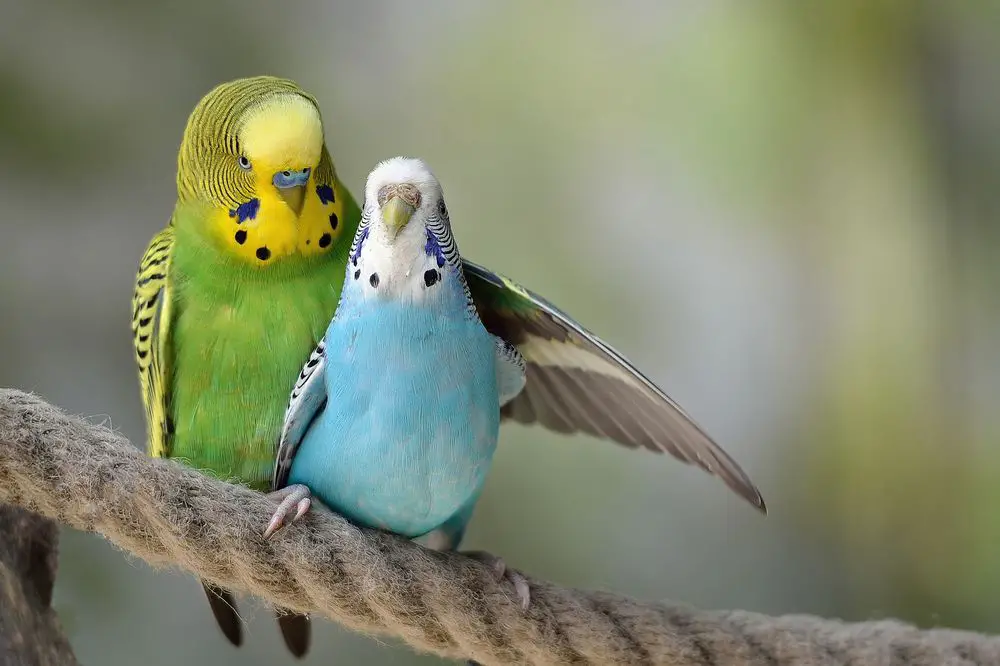
How long will a parakeet survive in the wild?
Many parakeets are known to live longer in the wild than in captivity, which is not common for other bird species. For example, the average wild parakeet can live well beyond 10 years, and can sometimes live over two decades.
The survival of a parakeet in the wild largely depends on several factors, including its species, the environment it’s released into, and its individual adaptability. Parakeets, also known as budgerigars, are not native to many regions where they might escape or be released, making their chances of survival relatively low. In the wild, parakeets are native to Australia, where they have adapted to the specific ecosystem over thousands of years.
When parakeets are introduced into non-native environments, they often struggle to find food, water, and suitable shelter. They may also face threats from predators and harsh weather conditions. In many cases, parakeets released into the wild do not survive for long, typically just a few weeks to months.
Furthermore, parakeets in the wild live in flocks for protection and social support. A lone parakeet released into the wild may struggle to find or join a suitable flock, which can further decrease its chances of survival.
Overall, while there are anecdotal reports of pet parakeets surviving in the wild for extended periods, the odds are against their long-term survival due to their non-native status and the challenges they face in unfamiliar environments.
Can a parakeet survive if it flies away?
If your parakeet has been missing for more than 24 hours, don’t give up hope. It is possible that your bird has flown far away, but may still find their way back within earshot, where the sounds of your voice and the chatter of other parakeets may yet lure him back.
When a pet parakeet escapes or flies away from its cage or owner’s home, its chances of survival are generally low, especially if it’s not in a region where parakeets are native. There are several reasons for this.
Firstly, domesticated parakeets have been bred for generations in captivity, and they may lack the natural instincts and skills required for survival in the wild. They might struggle to find food, water sources, and appropriate shelter.
Secondly, parakeets are social birds that typically live in flocks in the wild. A solitary escaped parakeet may suffer from loneliness and stress, which can further reduce its chances of survival.
Additionally, escaped parakeets can face numerous dangers in urban environments, such as traffic, predators, and exposure to harsh weather conditions.
While there have been instances of parakeets being found and rescued after flying away, the best chance of survival for an escaped parakeet is to be reunited with its owner promptly. This is why it’s crucial for parakeet owners to take preventive measures to secure their pet’s environment and ensure their safety.
Can caged birds survive in the wild?
Pet birds will probably not survive if released unless the habitat where you live is very similar to the one they came from. If the birds are captive-bred or were taken from the wild as nestlings, they have little chance of survival—they don’t know how to find food, what to eat, where to roost.
Caged birds, including parakeets, often face significant challenges when released into the wild. Their chances of survival depend on several factors, such as their species, the duration of captivity, and the specific environment into which they are released.
Birds that have spent most of their lives in captivity may lack essential survival skills, including foraging for food, avoiding predators, and finding suitable shelter. In many cases, these birds have become dependent on humans for their basic needs, making it even more challenging for them to adapt to a wild setting.
Moreover, caged birds may carry diseases that can spread to wild bird populations, posing a risk to local ecosystems. Their release can also disrupt the local ecosystem by introducing non-native species or impacting local wildlife.
While there are instances of caged birds adapting to the wild successfully, these are exceptions rather than the rule. It’s generally recommended not to release caged birds into the wild, as it can be harmful both to the individual bird and the environment.
Will my budgie survive if he flew away?
If the weather is bad with low temperatures and much rain, an escaped budgie will survive just a few days in the wild – or even less. At temperatures below freezing point and with a thick layer of snow, the bird will most likely not even survive the first night outdoors.
The survival of a budgie that has flown away from its owner’s home depends on a variety of factors. Like other pet parakeets, budgies are domesticated birds, and their ability to survive in the wild is limited compared to their wild counterparts.
Budgies that fly away from home may face numerous challenges, including finding food, water, and shelter. They may not have the necessary skills and instincts to thrive in a natural environment. The odds of survival also depend on the location and climate. In regions where budgies are not native, the chances of survival decrease significantly.
Additionally, budgies are social birds, and a lone escaped budgie may experience stress and loneliness, further reducing its chances of survival.
The best course of action if your budgie flies away is to take immediate steps to try to locate and recover it. Place its cage or familiar items outside with food and water to attract it back. Post flyers and notify local animal shelters and online communities dedicated to lost and found pets. The sooner you act, the higher the chances of reuniting with your budgie safely.
What do wild parakeets eat?
Parakeets are mainly grainvores and when living in their wild state eat seeds and grasses which account for many of them being ground feeders. Many species will forage on the forest floor or savannah and dig up various food items. They feed on seeding grasses far more than large parrots.
Wild parakeets, also known as budgerigars, have a varied diet that consists mainly of seeds, vegetation, and occasionally insects. Their natural diet in their native habitat of Australia includes grass seeds, cereal grains, and various types of wild vegetation. In the wild, budgerigars are known to forage for food in open grasslands and scrubby areas.
One of their primary food sources is grass seeds, such as those from wild grasses and grains. They use their beaks to crack open these seeds and extract the nutritious kernel inside. Additionally, wild budgerigars feed on various types of fruits, berries, and green vegetation when available, which provides essential vitamins and minerals.
Insects also make up a small part of their diet. Budgerigars may consume insects like termites and ants, especially during the breeding season when they need extra protein to feed their chicks.
Overall, the diet of wild parakeets is well-adapted to their natural environment, and they have developed specialized feeding behaviors and beak structures to efficiently extract nutrients from the seeds and vegetation they consume.
Do escaped parakeets come back?
The worst-case scenario is that an escaped parakeet will fly non-stop for as far as it can, which may be many miles. In this case, the chances of it returning home on its own are very slim, but that’s not to say that you won’t find it.
Escaped parakeets rarely return on their own. When a pet parakeet escapes or flies away from its owner’s home, it is usually disoriented and may not have the necessary skills to find its way back. Parakeets have limited navigational abilities and may become lost quickly, especially in unfamiliar outdoor environments.
In some cases, escaped parakeets may initially stay in the vicinity of their escape but gradually move farther away over time as they search for food and shelter. They may also join flocks of wild birds, making it even more challenging for them to be found or to return home.
However, there are steps you can take to increase the chances of your escaped parakeet returning:
Search the Area: Immediately begin searching your neighborhood, nearby trees, and shrubs. Parakeets may stay relatively close to their point of escape initially.
Post Flyers: Create and post flyers with a clear picture of your parakeet, your contact information, and a description of where and when it was last seen. Share these flyers with neighbors and online communities.
Set Up a Cage: Place your parakeet’s cage outside with familiar food and water to attract it back. Parakeets often recognize their cage as a safe place.
Contact Animal Shelters and Bird Rescues: Inform local animal shelters and bird rescue organizations about your lost parakeet. They may have information on found birds.
Use Social Media: Utilize social media platforms and local online communities to spread the word about your lost parakeet.
While it is rare for escaped parakeets to return on their own, taking these proactive steps can improve the chances of a reunion.
Why does my parakeet keep flying away from me?
So instinctively they are trying to be independent. All baby birds go through this stage – one day they love you, the next day they act like you are a stranger. Be patient with them and they will soon be back to wanting to be handled.
If your parakeet consistently flies away from you, several factors could be contributing to this behavior:
Fear or Lack of Trust: Parakeets are prey animals, and they can be skittish. If your bird doesn’t trust you or is frightened, it may fly away when you approach. Building trust through positive interactions and patience is essential.
Desire for Exploration: Parakeets are curious creatures, and their natural instinct is to explore their surroundings. If your parakeet is in an open space and sees something intriguing, it might fly to investigate.
Need for Exercise: Parakeets are active birds and need regular exercise to stay healthy. If your parakeet hasn’t had enough flying time or mental stimulation, it may fly away as a way to release pent-up energy.
Lack of Recall Training: If you haven’t trained your parakeet to respond to recall cues, it may not understand that it should return to you when called.
To address this behavior, you can take the following steps:
- Build Trust: Spend time with your parakeet, offering treats and speaking softly to build trust and reduce fear.
- Provide Mental Stimulation: Offer toys, puzzles, and activities to keep your parakeet engaged.
- Train Recall: Work on recall training, teaching your bird to come to you when called using positive reinforcement techniques.
- Supervised Flight: Allow your parakeet to fly in a controlled, safe space where you can monitor its activities.
Understanding your parakeet’s behavior and addressing its needs can help reduce the urge to fly away and foster a stronger bond between you and your bird.
Do parakeets eat in the wild?
In the wild, parakeets eat a wide variety of foods. Flowers, seeds, fruits, and leafy green vegetables are all favorites of parakeets that are not domesticated. However, seeds will make up the majority of their diet.
Yes, parakeets do eat in the wild. Parakeets, also known as budgerigars, are naturally found in the arid and semi-arid regions of Australia. In their natural habitat, they have adapted to a diet primarily composed of seeds, vegetation, and occasional insects.
Parakeets are highly efficient seed eaters. They use their specialized beaks to crack open seeds and extract the nutritious kernel inside. Grass seeds, cereal grains, and various types of wild vegetation make up a significant portion of their diet.
In addition to seeds, wild parakeets will also consume various types of fruits, berries, and green vegetation when available. These items provide essential vitamins and minerals that complement their primarily seed-based diet.
During the breeding season, parakeets may increase their intake of insects, such as termites and ants, to provide extra protein for their chicks.
So, in their natural habitat, wild parakeets actively forage for food, relying on seeds and vegetation as their primary sources of nutrition.
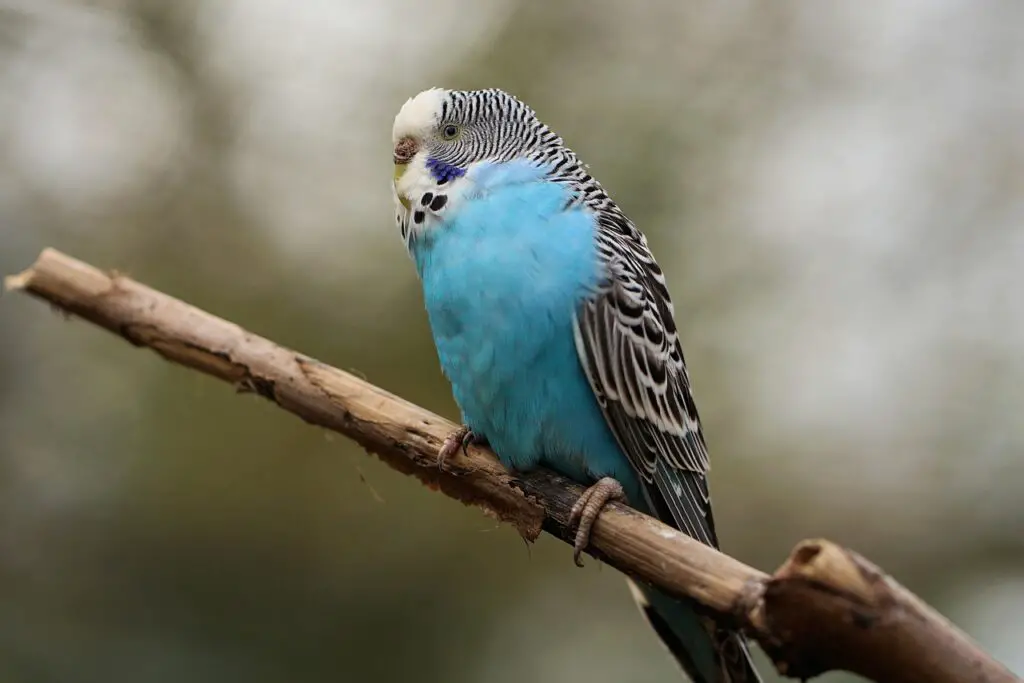
Conclusion
In the grand tapestry of the natural world, parakeets, or budgerigars, are a species that have successfully carved out their niche in the wild. Their ability to survive in their native habitats is a testament to their evolutionary adaptations and behaviors honed over thousands of years. However, the prospect of a domesticated parakeet thriving in the wild is a much more complex and uncertain endeavor.
Wild parakeets are a resilient and resourceful species that have learned to navigate a variety of ecosystems, from arid regions to woodlands, displaying remarkable adaptability in the face of changing environmental conditions. They have evolved to locate essential food sources, water, and shelter while also employing a keen sense of vigilance to evade predators.
On the other hand, pet parakeets, while sharing the same species, are often at a disadvantage in the wild. Their lives in captivity may not equip them with the necessary survival skills or behaviors required to forage for food, find suitable nesting sites, or protect themselves from natural predators.
The release of pet parakeets into unfamiliar environments poses significant ethical and ecological concerns. These introduced birds may disrupt local ecosystems, compete with native species for resources, and potentially spread diseases.
In summary, the question of whether a parakeet can survive in the wild is a nuanced one. Wild parakeets have evolved over millennia to adapt to their natural environments successfully. Still, pet parakeets, while sharing the same genetic heritage, may struggle to thrive outside the controlled conditions of captivity. Therefore, responsible ownership and care for pet parakeets remain essential to ensure their health and well-being while appreciating their wild counterparts’ remarkable ability to survive in nature’s embrace.

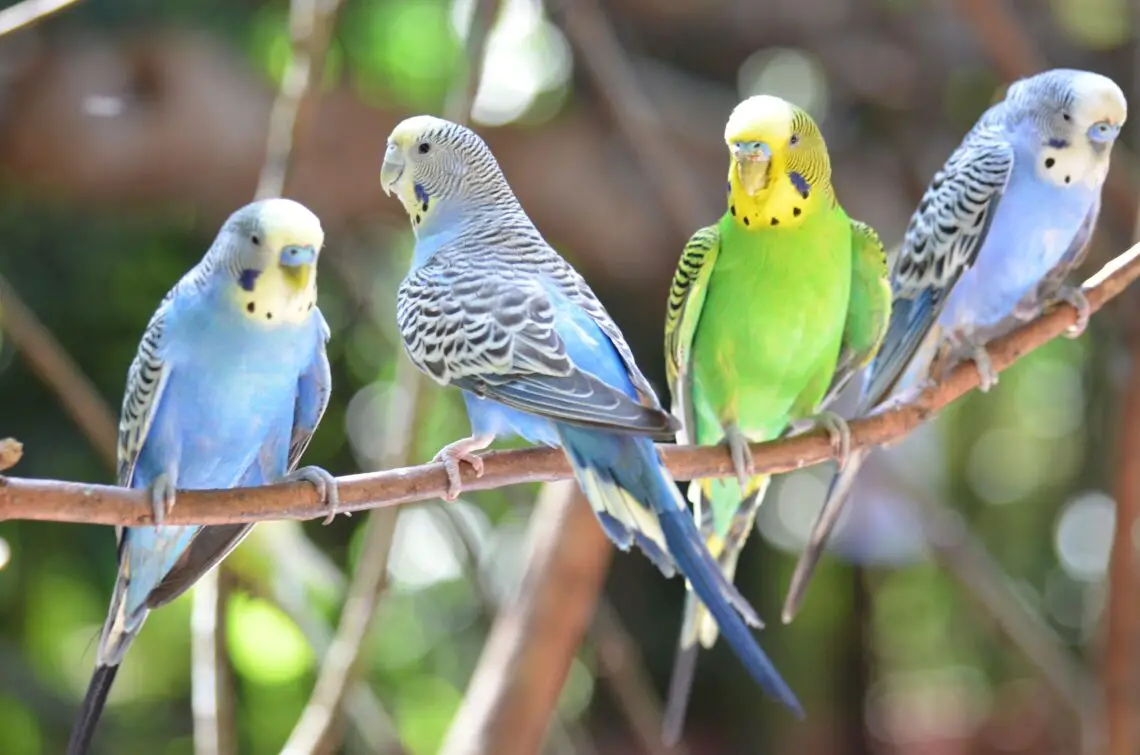
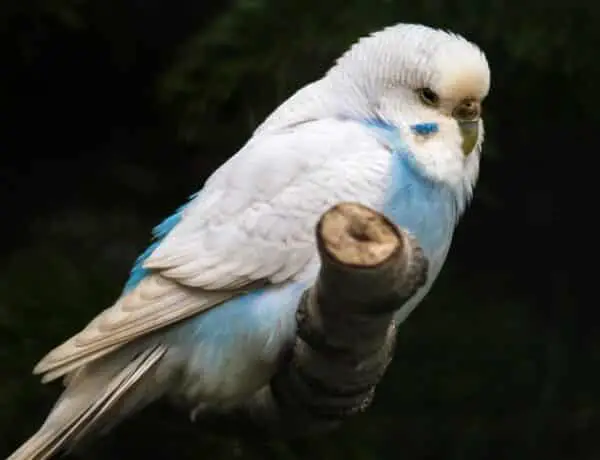
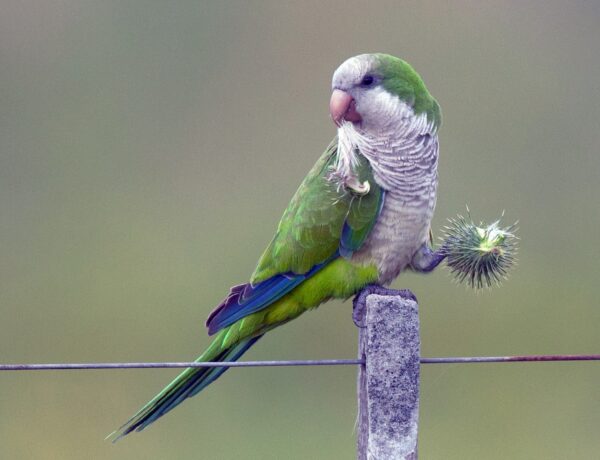
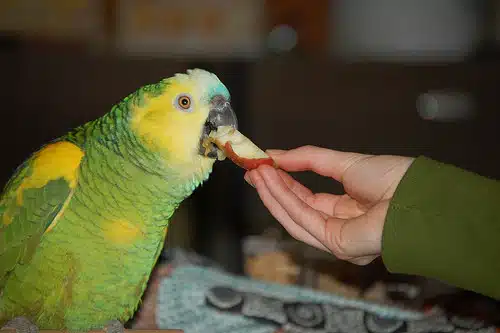
No Comments